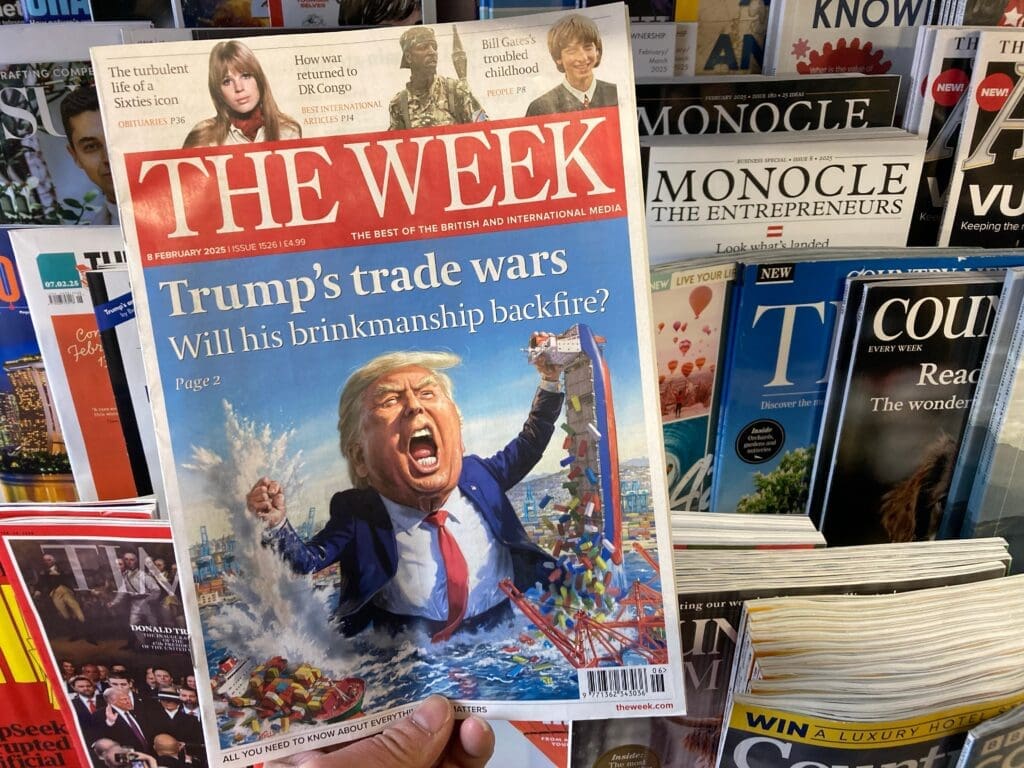The rise of “Trumponomics” has sharply heightened global trade tensions, economic uncertainty and market volatility.
It is no overstatement to say that the U.S. administration’s erratic tariffs and policies risk the dissolution of the “rules-based order” established by the U.S. and the West after the second world war, severely eroding America’s global credibility and geopolitical hegemony.
The concept of Trumponomics extends well beyond tariffs and trade wars to include chip and technology battles, as well as broader protectionist policies—subordinating economic interests to national security imperatives rather than to financial rationale, comparative advantage, or the functioning of free markets.
President Donald Trump’s approach harks back to a bygone era when manufacturing was the foundation of financial power.
In contrast, today’s U.S. economic strength is anchored in tech-based services, with the country running a substantial $293 billion surplus in trade in services and revenues from intellectual property rights.
In a globalized economy, physical location matters less than participation in supply chains and the ability to navigate growing product complexity.
However, U.S. efforts to decouple from China—combined with rising tariff and non-tariff barriers with the European Union, Canada, Mexico and others—already signal a restructuring of global supply chains.
Economic policy must focus on reconfiguring the global trade, financial and technology landscape
Tariffs, retaliation and trade policy uncertainty have prompted the International Monetary Fund to downgrade its growth forecasts sharply, revising global growth down by 0.5 percentage points to 2.8 percent for this year.
In the MENA region, growth is now projected at only 2.6 percent—a downward revision of 0.9 percentage points—with Saudi Arabia and the United Arab Emirates expected to expand by 3 percent (down from 3.3 percent) and 4 percent, respectively.
While the direct impact of the U.S. tariff hikes on the MENA will be limited, $22 billion in non-oil exports are at risk. Bahrain, Egypt, Jordan, Lebanon, Morocco and Tunisia are expected to be significantly affected by the new tariff hikes.
The indirect impact stems from several factors: weaker oil demand and OPEC+ production hikes, which could push prices lower and hurt oil-exporting nations; pressure from a weakening dollar; a pause in the IPO pipeline amid heightened market volatility and increased financing costs, with rising interest payments posing challenges for highly indebted countries such as Bahrain, Morocco, Jordan, Tunisia and Egypt.
These pressures are also likely to weigh on trade-dependent sectors such as transport and logistics.
Buffering strategies
For Asian and Arab economies—particularly those led by the Gulf Cooperation Council (GCC)—economic policy must increasingly focus on reconfiguring the global trade, financial and technology landscape to reflect the priorities of a more multipolar, non-U.S.-centric order.
The first critical building block of this new order is the development of deep, reciprocal regional and bilateral trade agreements that extend beyond goods to encompass broader policy areas.
For the GCC, immediate strategic priorities include securing a trade agreement with the Asean Free Trade Area and finalizing a long-negotiated free trade agreement with China.
The second task at hand is the development, deepening and interlinking of financial markets. As of the end of 2024, the U.S. accounted for almost half of global equity market capitalization, with the size of its financial markets reaching nearly 200 percent of GDP—compared to just 50 percent for China.
The dominance of U.S. markets means that financial shocks originating there—as witnessed during the global financial crisis—reverberate worldwide. This highlights the urgent need for regions like the GCC to reduce their exposure and de-risk from U.S. financial markets.
The capital-exporting GCC financial markets should be integrated. Their larger size allows them to link to Singapore, Hong Kong and Shanghai efficiently. Linking with Asian markets would transform the GCC into a global player in financing the energy transition, AI, robotics, biotech and automation.
The third step entails de-risking regional payment systems from the U.S. dollar and its increasing weaponization.
As of January 2025, according to global finance network SWIFT, the dollar accounted for 50 percent of global payment transactions—compared to the euro’s 22 percent and the Chinese yuan’s 4 percent. Its dominance in the trade finance market is even greater, with an 83 percent share, versus just 6 percent for the yuan and 5 percent for the euro.
However, the future belongs to digital currencies. As global supply chains continue to pivot towards Asia and China, the yuan—and particularly the digital yuan—are likely to form the basis of a growing share of non-dollar trade financing.
Yet for the yuan to truly become a global reserve currency, China must accelerate the development of broad, deep and liquid domestic debt and financial markets.
Full convertibility of the yuan remains a critical milestone if it is to stand as a viable, long-term alternative to the U.S. dollar.
Meanwhile, the ongoing Trumponomics-driven trade and technology wars are accelerating a pivot towards the East—and prompting the GCC and its linked economies to intensify efforts to de-risk from overexposure to the U.S.


